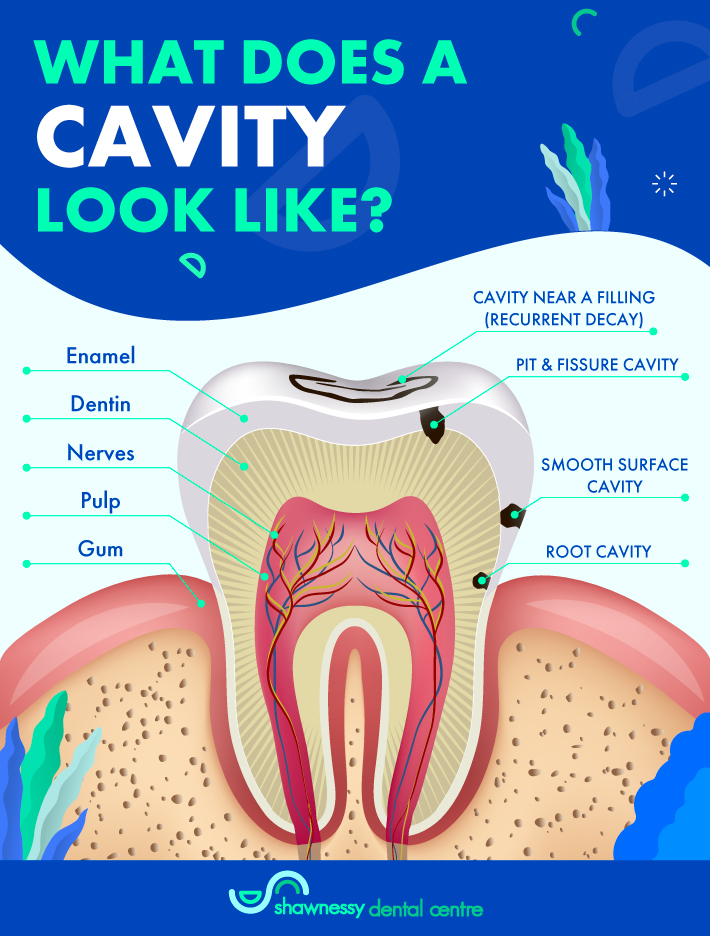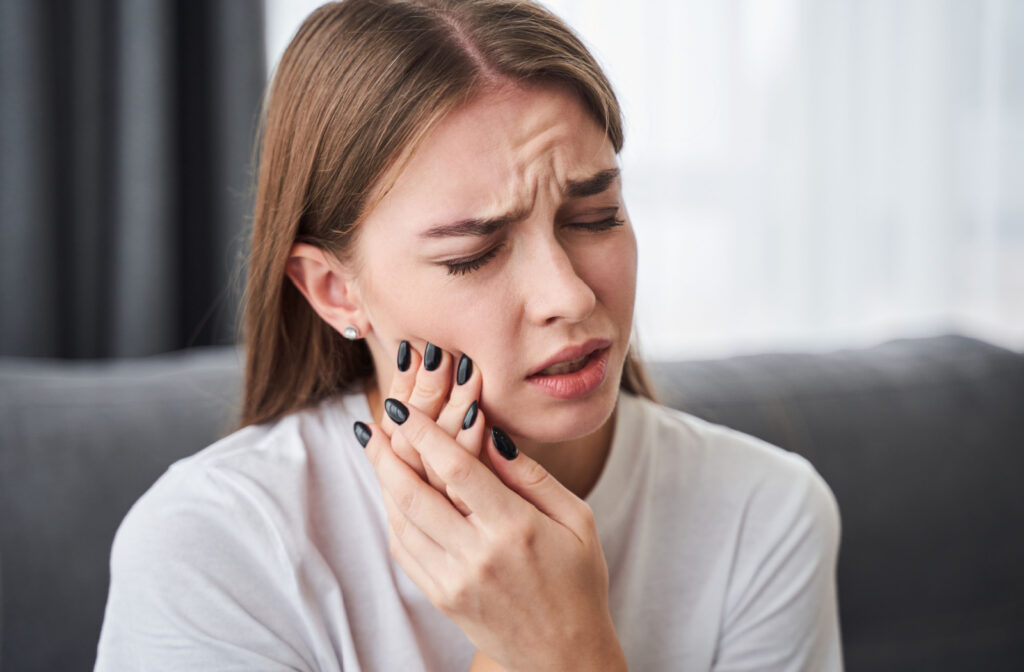Many people who’ve had cavities can tell you what they feel like, but what about what they look like or what causes them? Whether you’ve never had a cavity or you’re wondering if you have one right now, learning the answers to questions like those can help you make an informed decision about your dental health.
In general, depending on how far they have progressed, cavities often look like small to medium-sized brown and black dots on your teeth. Sometimes, small white spots on your teeth can be a sign of a cavity developing or an area where a cavity may develop as a result of the outer layer of your teeth wearing down.
While cavities are common in children, adults can get them too, which is one reason why regular dental exams and cleanings are so important for people of all ages.
Learning more about cavities can help you take steps to prevent them with proper oral hygiene—and help you know when you should seek treatment for more serious oral health issues.
What Are the Signs You Have a Cavity?
Cavities can be difficult to spot with the naked eye and may appear in areas that are hard to examine on your own, such as between your teeth. For many of our patients, the noticeable signs of cavities are the discomfort they can cause rather than their appearance.
Some of the signs of a potential cavity include:
- Toothaches
- Tooth sensitivity
- Tooth pain
- Swelling around your jaw or gums
- Bad breath or a persistent strange taste in your mouth
- A hole or crack you can feel in your teeth
- Dark spots on your tooth
When you notice changes in your oral health, it’s important to seek care from a dentist. We can help you find out what’s causing those changes and recommend treatments to address them.
Is Tooth Discolouration a Bad Sign?
Tooth discolouration can have many causes and can be a result of aging, but it can also be a sign of tooth decay, challenges related to your oral hygiene, and other issues that may be affecting your dental health.
During your dental exam, we can help determine the cause of discolouration, provide treatment for underlying conditions related to tooth discolouration, and provide aesthetic treatments like tooth whitening based on your oral health and smile goals.

What Causes Cavities?
Cavities are caused by sugars and bacteria in our mouths that mix and create an acid that eats away at our teeth. Over time, that acid can eat through the outer layer of your teeth—your enamel—and cause damage to the deeper inner layers that connect to your nerves—your dentin and pulp.
Sugary and acidic foods and drinks are some of the most common causes of cavities. In general, cavities are more common in children, but they can affect adults too. For adults, 2 particular issues can increase your risk of cavities: loose fillings and receding gums.
Loose fillings can trap food particles that can eventually cause cavities, and the exposed area underneath a broken or loose filling can also be more susceptible to cavities.
Receding gums can lead to cavities because the lower layers of your teeth can be exposed as your gum line gets lower. The bottom sections of your teeth aren’t protected by enamel, so those parts of your teeth can develop cavities more easily.
Other factors that can increase your risk of cavities include:
- Gum disease (gingivitis)
- Frequent snacking
- Dry mouth
- Acid reflux
- Inadequate oral hygiene
How Do You Prevent Cavities?
Once cavities develop in your teeth, they won’t go away on their own—cavities can’t be reversed. Prevention can help you avoid fillings and other treatments, and effective cavity prevention typically starts with proper oral hygiene.
Effective Oral Hygiene
You should be brushing your teeth twice a day. Fluoridated toothpaste is generally an excellent choice, but we can also recommend other kinds of toothpaste based on your specific oral health needs.
You should also be flossing and using mouthwash at least once a day. If you want to go even further, you can also carry a small travel toothbrush and toothpaste to brush your teeth after meals—just be sure to wait about 30 minutes before brushing.
Positive Oral Health Habits
In addition to practicing healthy oral hygiene, certain lifestyle habits can also help reduce your risk of developing cavities. Some of the positive oral health habits we recommend include the following:
- Make water your drink of choice
- Avoid eating sugary and acidic foods
- Avoid snacking—particularly before bed
- Choose sugarless gum
- Seek treatment for conditions like acid reflux and dry mouth
What Happens if You Don’t Get Treatment for a Cavity?
Cavities can continue getting worse without treatment. As they get deeper into your teeth, cavities can increase tooth sensitivity and cause severe pain. Cavities can also increase your risk of experiencing issues like gum disease and an abscessed tooth.
During your dental exam, your dentist can determine which treatment may be needed for cavities. For small cavities in their early stages of development, you may only need to make lifestyle changes to prevent progression. However, fillings, bonding, and other treatments may be recommended instead based on your overall oral health and the size of the cavity.
Restorative Dental Care from Experienced Dentists
At Shawnessy Dental Centre, your dental health is our priority. We want to help you keep your smile healthy and your family happy by providing dental care with a focus on comprehensive care and positive experiences. If you’ve been experiencing signs of a cavity or want to know more about your oral health, schedule an appointment with us. We would love to help.


